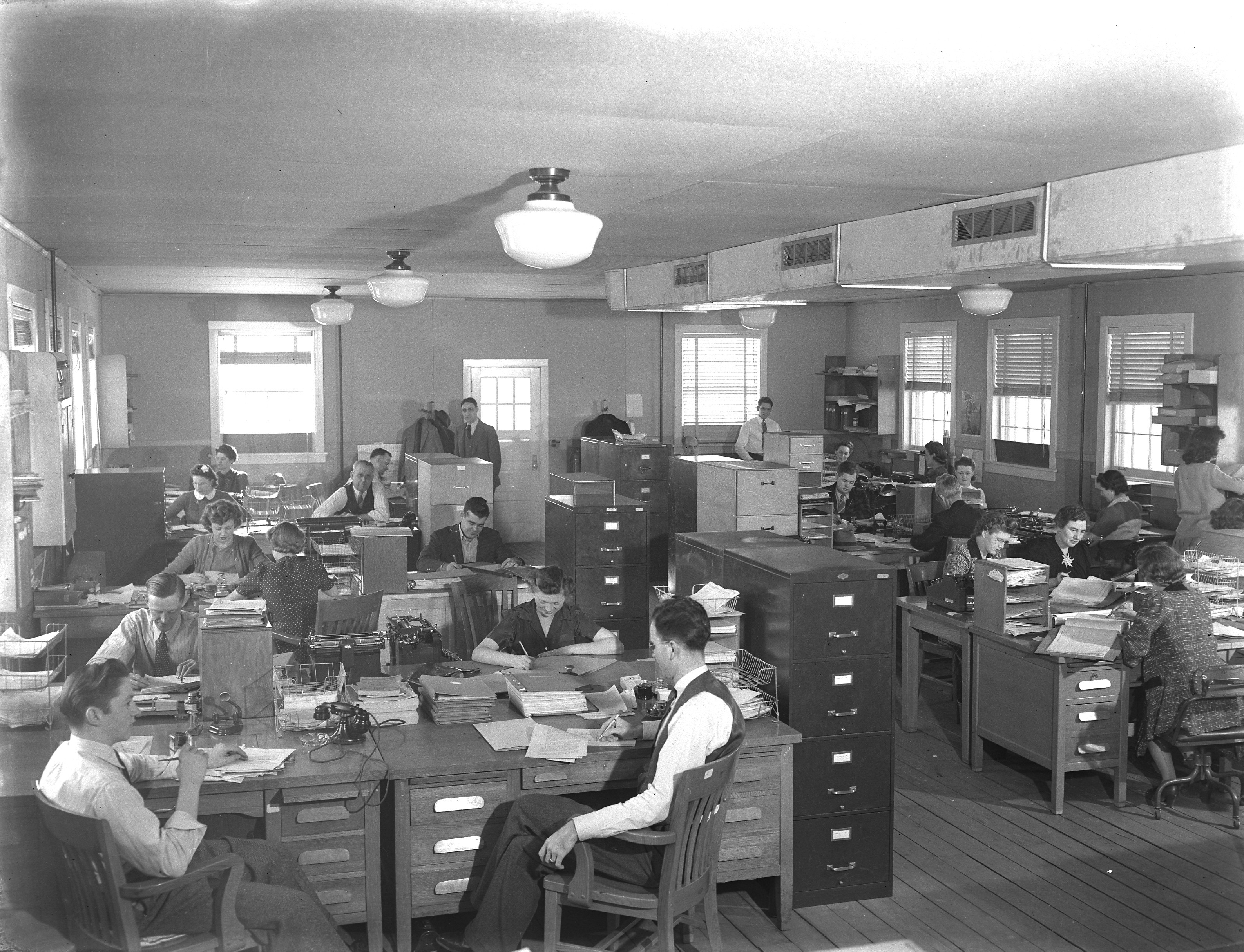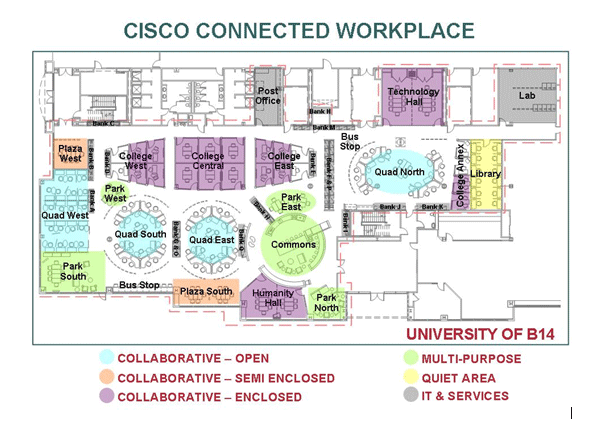I think that I would like the modern office concept where nobody has their own office or their own desk. Instead, the office space is arranged in a variety of different types of work areas.
Cisco published a study on their experience at https://www.cisco.com/c/en/us/about/cisco-on-cisco/collaboration/connected-workplace-web.html. From the page:
Quote:
Cisco WPR resolved to build a work environment based not on titles, but rather on the needs of individuals, by giving all employees a broad choice of workspaces and technology tools to do their jobs. "In college, a professor doesn't say, 'Complete this project from 9:00 a.m. to 5:00 p.m. in the library,'"says Dolly Woo, Cisco workplace strategist. "Rather, you're given a task and a deadline, and how you complete that task is up to you. We had the same vision for Cisco. Employees would have the freedom to choose their environment based on the requirements of their current task." By creating a "connected workplace," as the team dubbed the project, WPR hoped to achieve measurable business benefits such as reducing real estate costs, in addition to increased productivity and employee satisfaction.
...
The Connected Workspace floor plan was inspired by a university theme, with open spaces called quads, plazas where employees can meet informally, a commons area for breaks, and enclosed offices called colleges (see Figure 4). The absence of cubicle walls lets in more natural light and creates a more open and spacious atmosphere.
The designers included different types of work spaces to accommodate different work styles and business needs.

Figure 5. Workstation with Docking Station, IP Phone, Keyboard, and Screen
Click on Image to Enlarge 
Individual workstations, equipped with:
* Docking station, which enables quick connection to desktop accessories such as flat-screen monitors, keyboard, and mouse (see Figure 5)
* Cisco IP 7960 Phone, which employees personalize with their phone number and preferences with a login, using Extension Mobility or
* Cisco IP Communicator, a software IP phone that runs on a laptop and sends voice over the wireless network. Employees use either wired headphones or a wireless Bluetooth headset to turn their laptops into high-quality IP phones. Employees who use hardware IP phones tend to retrieve their Cisco Unity voice mail by phone while those using Cisco IP Communicator on their laptops tend to more often use their laptop browser to review, listen to, and manage voice mail.
* Liquid crystal display monitors at some workstations
* Collaboration spaces, both formal and informal. Formal meeting spaces have closed doors for privacy. They also have tables, speakerphones, and some IP videoconferencing stations. Two of the largest meeting rooms can be quickly reconfigured into smaller rooms using a movable wall. Informal spaces have soft seating on wheels, mobile tables, and movable privacy screens, enabling participants to spontaneously create a collaborative meeting space (see Figure 6).
* A quiet space, "the library," where employees can work without distractions (see Figure 7).
* A lab area to support both IT product testing and new product deployments in the Cisco Connected Workplace test area.
Employees often move to different areas throughout the day. When Woo was interviewed for this story, for example, she was seated in a small conference room, which she had chosen for privacy and so that her phone conversation would not disturb others. After the interview she planned to move to an individual workstation, the library, or a soft-seating area for individual work.












